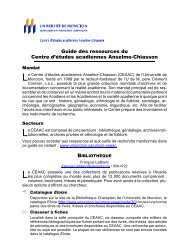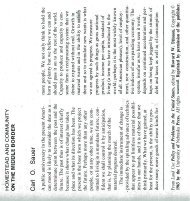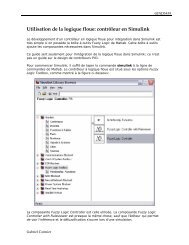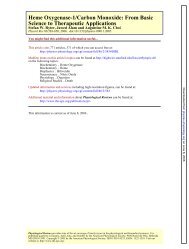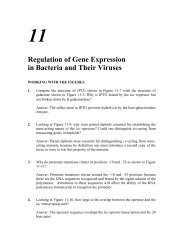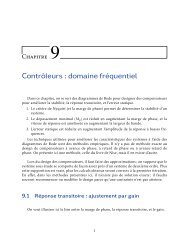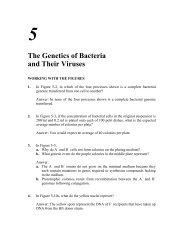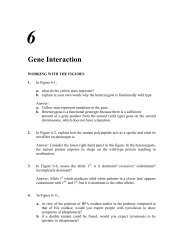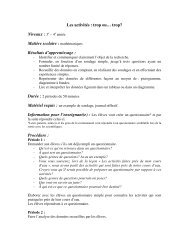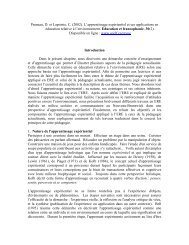IGA 8/e Chapter 2
IGA 8/e Chapter 2
IGA 8/e Chapter 2
Create successful ePaper yourself
Turn your PDF publications into a flip-book with our unique Google optimized e-Paper software.
<strong>Chapter</strong> Two 45and had six sons, all of whom had this condition, and several daughters, all ofwhom were normal. For four generations, this condition was passed from fatherto son. From this evidence, what can you postulate about the location of thegene?Answer: If the historical record is accurate, the data suggest Y linkage. Anotherexplanation is an autosomal gene that is dominant in males and recessive infemales. This has been observed for other genes in both humans and otherspecies.77. The wild-type (W) Abraxas moth has large spots on its wings, but the lacticolor(L) form of this species has very small spots. Crosses were made betweenstrains differing in this character, with the following results:Provide a clear genetic explanation of the results in these two crosses, showingthe genotypes of all individual moths.Answer: The different sex-specific phenotypes found in the F 1 indicate sexlinkage—thefemales inherit the trait of their fathers. The first cross alsoindicates that the wild-type large spots are dominant over the lacticolor smallspots. Let A = wild type and a = lacticolor.Cross 1: If the male is assumed to be the hemizygous sex, then it soon becomesclear that the predictions do not match what was observed:PF 1a/a female A/Y maleA/a wild-type femalesa/Y lacticolor malesTherefore, assume that the female is the hemizygous sex. Let Z stand for thesex-determining chromosome in females. The cross becomes:Pa/Z female A/A maleF 1 A/a wild-type male




